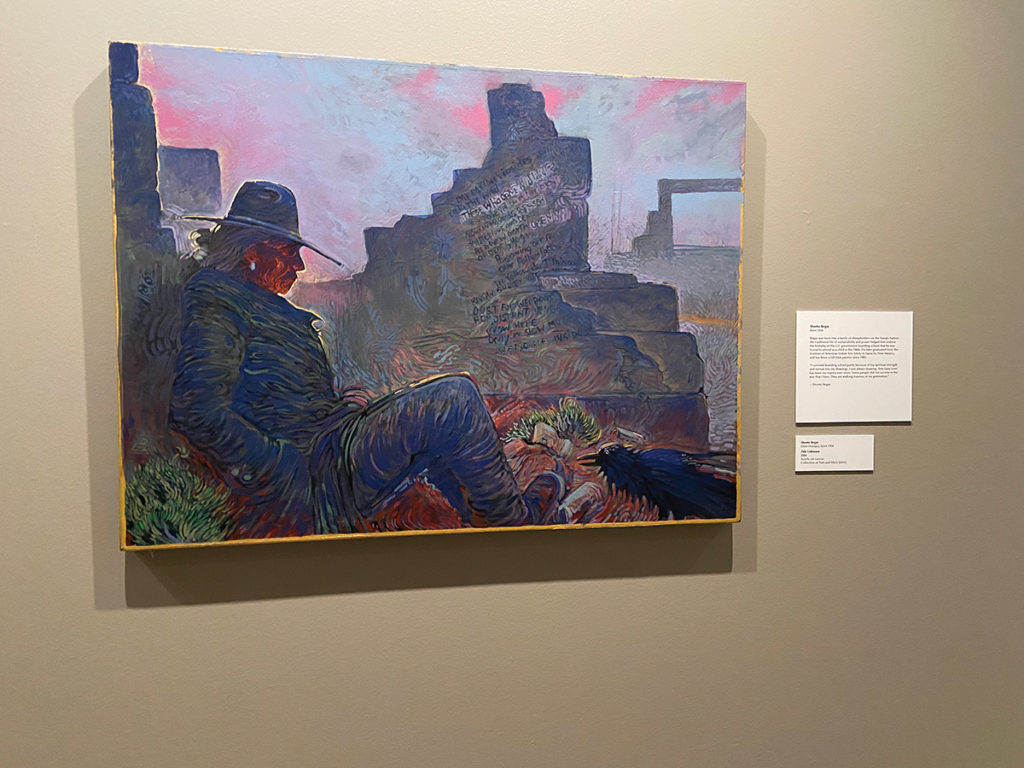Pictured above: “Away from Home: American Indian Boarding School Stories” honors Native Americans that were forced into assimilation at boarding schools.
Courtesy of Sophia George | The Crow’s Nest
By Sophia George
The James Museum of Western & Wildlife Art in downtown St. Petersburg welcomed a new exhibition, “Away from Home: American Indian Boarding School Stories.”
The exhibit opened on Jan. 28 and runs through March 16.
According to a press release, the goal of “Away from Home” is to further educate on the history of federally operated boarding schools and to share the stories of Native Americans that were affected by it.
From the late 19th century into the 20th century, the U.S. government separated thousands of Native American children from their families and forced them to attend federally operated, off-reservation boarding schools.
They endured forced assimilation –– stripped of their culture, religious practices and languages. Many of the students completely lost contact with their families, resulting in a multi-generational impact.
The idea of creating boarding schools and assimilating Native children began in the 1870s when Military Officer Richard Henry Pratt was sent to St. Augustine, Florida to supervise 72 Native American prisoners of war.

“Pratt believed having Native Americans isolated from reservations was helpful to them, and he realized that it was less expensive to assimilate children than try to kill them,” said Emily Kapes, curator of art for the museum.
The first boarding school, Carlisle Indian Industrial School, was established in 1879 in Pennsylvania. By 1902, there were 25 federally operated, off-reservation boarding schools in the U.S.
“Art is a story and museums have a unique ability to share stories that allow us to see, feel and learn of lived human experience in a powerful way,” said Laura Hind, executive director at the museum. “This exhibition on American Indian Boarding Schools is an opportunity to learn about our past and make connections that inform our present and future.
The exhibit features historical photographs, objects, interactive timelines and interviews as well as paintings and sculptures created by Native American artists that experienced the boarding schools.
There is a permanent version of this exhibition at The Heard Museum in Phoenix, Arizona. Due to its success, the National Endowment for the Humanities (NEH) now brings temporary versions of this exhibit to museums all around the country.
“This exhibition was originally organized by The Heard Museum in Phoenix, and it was not meant to be long lasting, but the positive response kept it going for 20 plus years,” Kapes said.
In an interview with The Crow’s Nest, Kapes explained that she picked this exhibition because she wanted to bring awareness and understanding to this part of history.

“We’re always looking for exhibits that feature native culture and art. This is a part of history that not many people know about, and it has lasting generational impacts,” Kapes said.
Along with the artwork that was borrowed for this exhibit, Kapes decided to add pieces created by Native American artists that were already in the museum’s collection.
The paintings and sculptures created by those that attended boarding schools, as well as historical books, uniforms and other objects convey the pain and struggles of Native Americans that were separated from their families and communities.
Before and after photographs around the exhibit show how their individuality and culture were erased.
According to Kapes, the goal of “Away from Home: American Indian Boarding School Stories” is to give people “a sense of Native American resilience and hope.”
To learn more about the exhibition and to purchase tickets, visit https://thejamesmuseum.org/awayfromhome/



